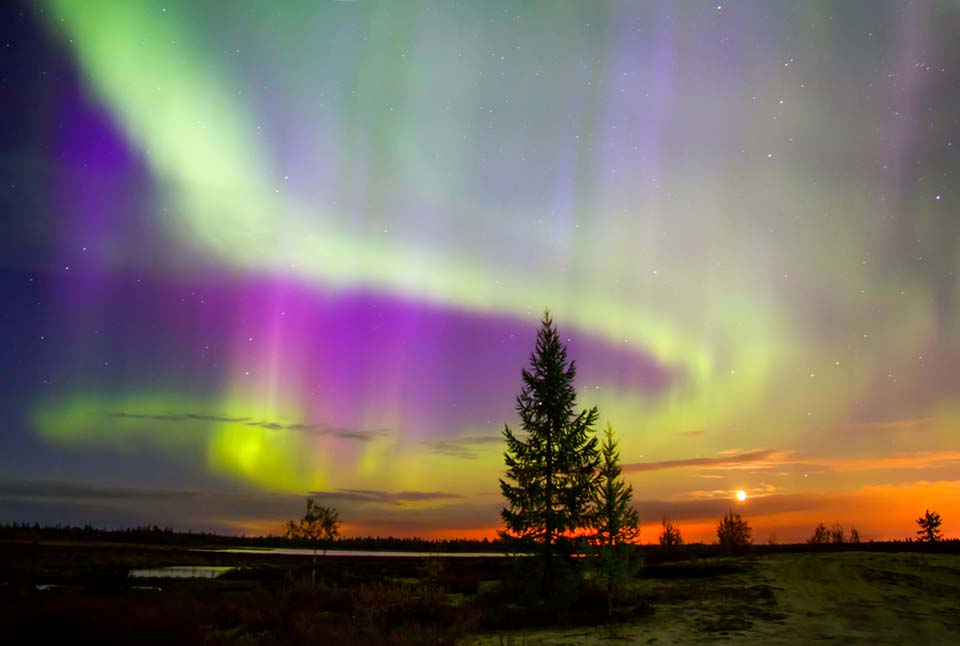The Polar Lights And The Legend Behind Them

A lot of us would like to go for a trip, either to a warm beach or a ski resort where we could also enjoy the view of polar lights. However, the Covid-19 restrictions have made transportation difficult, and we probably have to settle with home vacation. Still, we can mentally travel and discover the unique phenomenon of polar lights. In this article, we have some of the theories that our ancestors had developed to explain what they observed. Most of them are associated with religion, while in some cases, the ideas come as a result of the fear of human enemies of other tribes.
Aurora borealis, the Latin name for polar lights, is an impressive phenomenon. Aurora borealis is an exceptional bright celestial phenomenon that is observed in the upper layers of the atmosphere and is visible mainly at the poles, which is why it is also called Polaris. When the phenomenon occurs at the North Pole, it is called the North Lights, while, respectively, when it is observed at the South Pole, it is called the South Lights. The phenomenon presents a variety of colors and patterns, with sudden appearances and relatively rapid transformations. Such phenomena, commonly called aurorae, are caused by the collision of charged particles, mainly electrons but also protons, from space trapped in the Earth’s magnetic field. The predominant color of polar lights is generally white. It also appears colored when red prevails at the lower end of the rays that fall vertically, green at the upper, and among them the yellow that quickly disappears.
The appearance of northern lights aroused the interest of people since antiquity. The first observer of the phenomenon is considered to be Aristotle, the Greek scientist, and philosopher, who vividly described ”It seems that at night many nights of atheism are in many spectrums in the sky.” However, some analysts doubt the fact that he was talking about the polar lights due to the great distance of Greece to the North Pole.
In the folklore of the northern people, the aurora was associated with transcendental interpretations.
In 1732, Anders Celsius noted in his diary that the Northern Lights were a massive fire that, according to the beliefs of the time, came from volcanoes at the North Pole, by God, to warm people. The Swedes believed that they were reflections from the torches held by the Lapps in search of their Reindeers. The Finns thought that there were Angels of the Lord chasing demons. The Lapps hid women and children, stopped the sleighs, and picked up the bells so that they would not be noticed by the lights.
On the west coast of Norway, the inhabitants believed until the beginning of the last century that the Northern Lights are old unmarried women in the sky dancing and waving their white handkerchiefs. They thought that the lights were coming to take the unmarried women who were already old. Earlier it was believed that Aurora borealis was the reflection of the shields held by the Valkyries, who were dead virgins in the sky. The Scottish expression “Merry Dancers” seems to be associated with this legend, but with erotic extensions.
The Eskimos believed that it was the souls of the dead who sought their own. So during the phenomenon, they neither spoke nor whistled, fearing that lights would come down low and grab them, recognizing them by their voice. Some Indians in America also had the perception that the Northern Lights were the big fires lit by celestial demons when they cooked whales to eat! Other Indians thought it to be a large gathering of warriors near the North Pole, where they boiled their enemies in large cauldrons.
Finally, the Maori of New Zealand believed that their old ancestors had reached the South Pole and were trapped there. To get free, they put huge fires as a sign to their present descendants. During the Middle Ages, the church power at the time attributed the phenomenon as a harbinger of great evil. Many engravings of the time present it as a beast of hell with the aim of destruction.
Have you read?
Best Hospitality And Hotel Management Schools In The World For 2021.
Best Fashion Schools In The World For 2021.
Best Business Schools In The World For 2021.
Best Medical Schools In The World For 2021.
Follow CEOWORLD magazine on Facebook, Twitter, Instagram, and LinkedIn.
Bring the best of the CEOWORLD magazine's global journalism to audiences in the United States and around the world. - Add CEOWORLD magazine to your Google News feed.
Follow CEOWORLD magazine headlines on: Google News, LinkedIn, Twitter, and Facebook.
Copyright 2025 The CEOWORLD magazine. All rights reserved. This material (and any extract from it) must not be copied, redistributed or placed on any website, without CEOWORLD magazine' prior written consent. For media queries, please contact: info@ceoworld.biz








